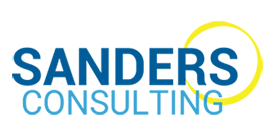How Healthy Are Your Jobs?
Four Weeks, $1500
There are so many myths shaping the ways that we work. Most of them have nothing to do with people’s capacities and needs. Many of the decisions shaping the ways Americans work were made 50 to 100 years ago. For example, the 40-hour work week and the 8-hour shift are compromises based on union and governmental bargaining in the mid-20th century. They have no relationship to the research we have on human health or sustainable productivity.
The future of work is likely to have little to do with the ways we’ve worked in the past. In order to attract and retain the best talent, we need to think carefully about the jobs people are asked to do. How people spend their time at work directly impacts their mental and physical health as well as their ability to make their best contributions. (See the US Surgeon General’s Model for Workplace Mental Health and Well-Being.)
In order to shift our work systems, we need to address the structures at work. The jobs (collections of tasks) we ask our people to do shape employees working lives. Done well, health-promoting job design is one of the most powerful assets an organization can offer. Job design is also a powerful lever for improving organizational culture.
All jobs are made-up, designed intentionally or unintentionally. All jobs have strengths and weaknesses. There is no perfect job. This isn’t about perfection, it’s about improving jobs so they take into account the health of the humans doing them.
The key is to identify and preserve a job’s strengths while addressing its weaknesses. I created my Job Diagnostic to help people identify the factors most likely to lead to burnout, turnover, illness, accidents, injuries, mistakes and near-misses. When we know the risk factors we’re looking for and with the help of the people doing the work, take action to address them, we can improve nearly any job.
Participants will learn how to diagnose any job by assessing how it:
- meet people’s needs
- reduces the risk of harm
- promotes sustainable productivity
This class features:
- short videos introducing key concepts
- weekly activities focused on real-world applications
- weekly zoom discussions
- a private LinkedIn group to share resources
Participants will diagnose a job they’ve had, identifying its strengths, weaknesses and potential improvements. Access to the online job diagnostic tool is included, along with a one-on-one discussion with Katherine.
Job Diagnostics is for anyone interested in attracting and retaining the best talent, such as:
- Leaders & Managers
- COOs, CMOs, CWOs
- Human Resources Professionals
- Safety Professionals
- Wellness Professionals
- Quality Professionals
- Engineers
Contact Katherine for more information.


